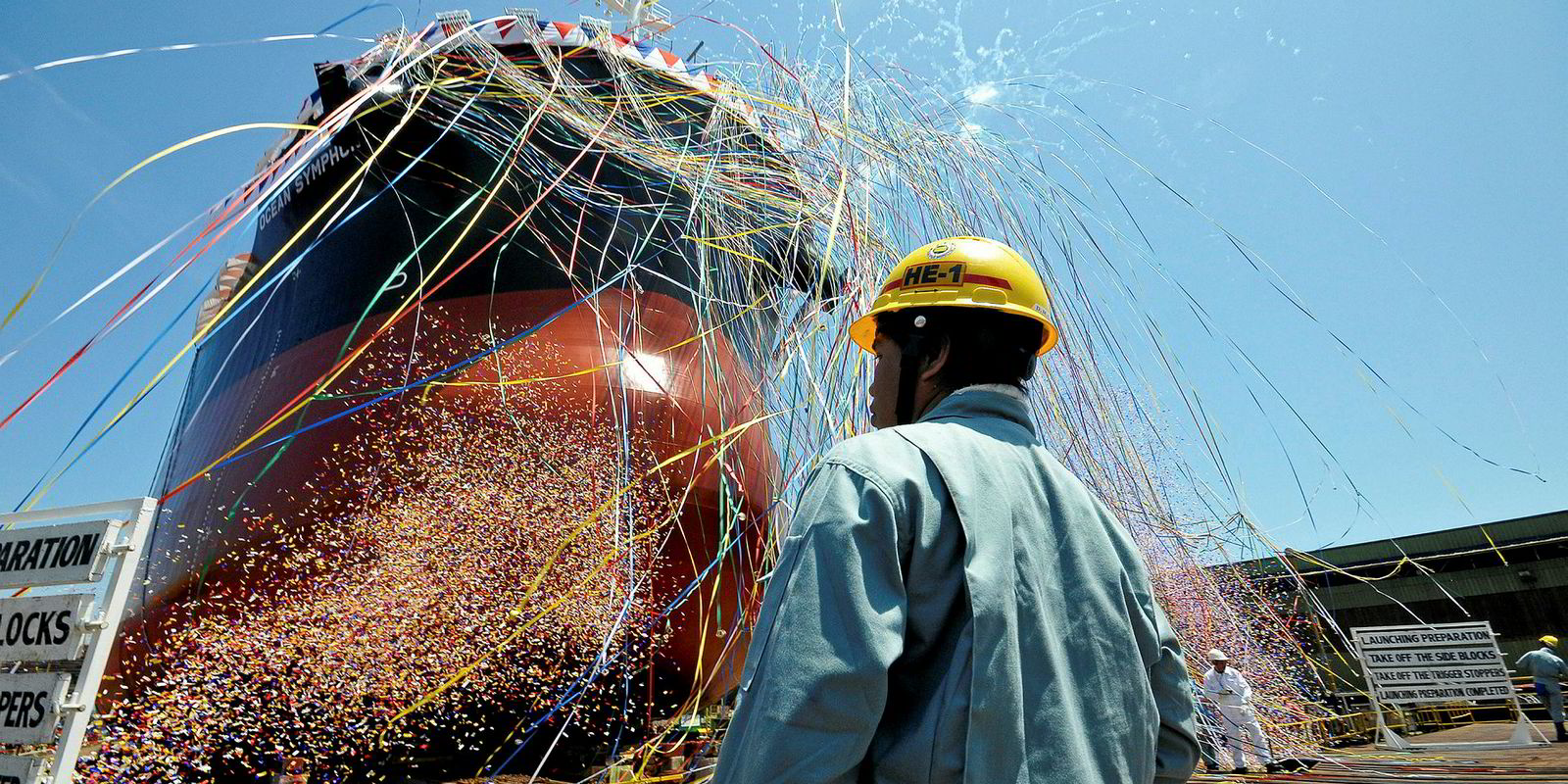A cooperation pact between a Mitsui Engineering & Shipbuilding (MES) unit and Tsuneishi Shipbuilding will consolidate the Japanese industry into three distinct and growing groups.
Two of these groups are aiming to gain an advantage by combining the advanced technical and engineering know-how of Japan’s industrial conglomerates with the lower-cost production of its medium-sized family-owned shipbuilders.
MES and the Kambara family-owned Tsuneishi have worked together in the past, having formed an alliance in the 1970s that has diminished over the years.
The companies came together again following the formation of Mitsui E&S Shipbuilding, which will be separated from MES in April this year.
“Japan’s major yards that are part of the big Japanese industrial giants have virtually exhausted all the possibilities for consolidation through merger,” one local yard source said. “The smaller private family-owned yards all want to remain independent, so what’s left is business cooperation between them, and this is going to be the basis for consolidation in Japan from now on.”
The two companies hope to combine Mitsui E&S’ technical know-how with Tsuneishi’s lower production costs in several areas, particularly at its most competitive sites: Tsuneishi Zhoushan in China and Tsuneishi Cebu in the Philippines.
Japanese shipbuilding powerhouses are coalescing into three main groups
- Mitsubishi Heavy Industries tied up with shipbuilders Imabari, Oshima and Namura
- NKK Corp and Hitachi Zosen came together before being joined by IHI Marine United to form Japan Marine United
- Mitsui E&S Shipbuilding has formed an alliance with Tsuneishi Shipbuilding
Mitsui E&S builds LNG carriers but is turning its focus towards medium-size LPG carriers of around 88,000 cbm following the acquisition of German specialist company TGE Marine Gas Engineering last year, and Tsuneishi could help it reduce hull production costs on such ships.
The other possibility is applying Mitsui E&S’ efficiency technology to Tsuneishi bulkers as well as its own designs. Tsuneishi’s TESS series of bulkers has been one of the most popular in the industry, while Mitsui E&S has its own NEO series of super-efficient ultramax, panamax and capesize vessels. Both companies build bulkers up to capesize.
Efficiency technology is viewed as the critical area for business development among shipbuilders in the future.
Both companies have said there are no plans at this stage to extend the arrangement into a cross-shareholding or eventual merger. Tsuneishi is particularly keen to keep ownership wholly within the Kambara family.
However, the tie-up comes in response to an almost identical pact signed last year between the industrial conglomerate Mitsubishi Heavy Industries, and Imabari, Oshima and Namura shipbuilding.
Mitsubishi is lending its diverse engineering skills to the lower-cost, high-volume dedicated shipbuilders.
The Mitsubishi-led group has said the door is open for others to join, and the speculation is that more yards could join Mitsui’s grouping too.
Local sources see the two groups expanding and forming the basis of national shipbuilding strategy over the coming months.
The other main yard grouping is Japan Marine United. Although this is a single company, it was formed through a process of consolidation that saw NKK Corp and Hitachi Zosen come together before being joined by IHI Marine United.
The sizeable yards that have yet to find a home and could fit in either groupings include the industrial conglomerate Kawasaki Heavy Industries and medium-sized shipbuilders such as Onomichi Dockyard and Sanoyas Hishino Meisho.



